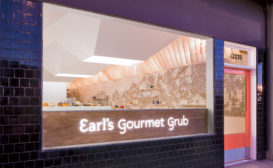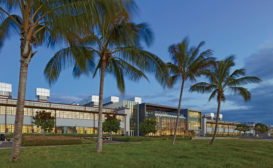Home » Los Angeles
Articles Tagged with ''Los Angeles''
LAPD Motor Transport Division + Main Street Parking
New to Downtown L.A.’s developing Gallery Row, John Friedman Alice Kimm Architects’ Main Street Parking + Motor Transport Division building for the Los Angeles Police Department sets a glowing standard for utilitarian civic architecture.
Read More
Playa Vista Park
Where Howard Hughes once flew, Michael Maltzan has designed a park that connects a new mixed-use development with the site's colorful history.
Read More
3641 Holdrege Avenue Building
Lynch / Eisinger / Design uses a series of new outdoor spaces to recast an industrial relic into a cool (and green) place to work.
Read More
Copyright ©2024. All Rights Reserved BNP Media.
Design, CMS, Hosting & Web Development :: ePublishing



